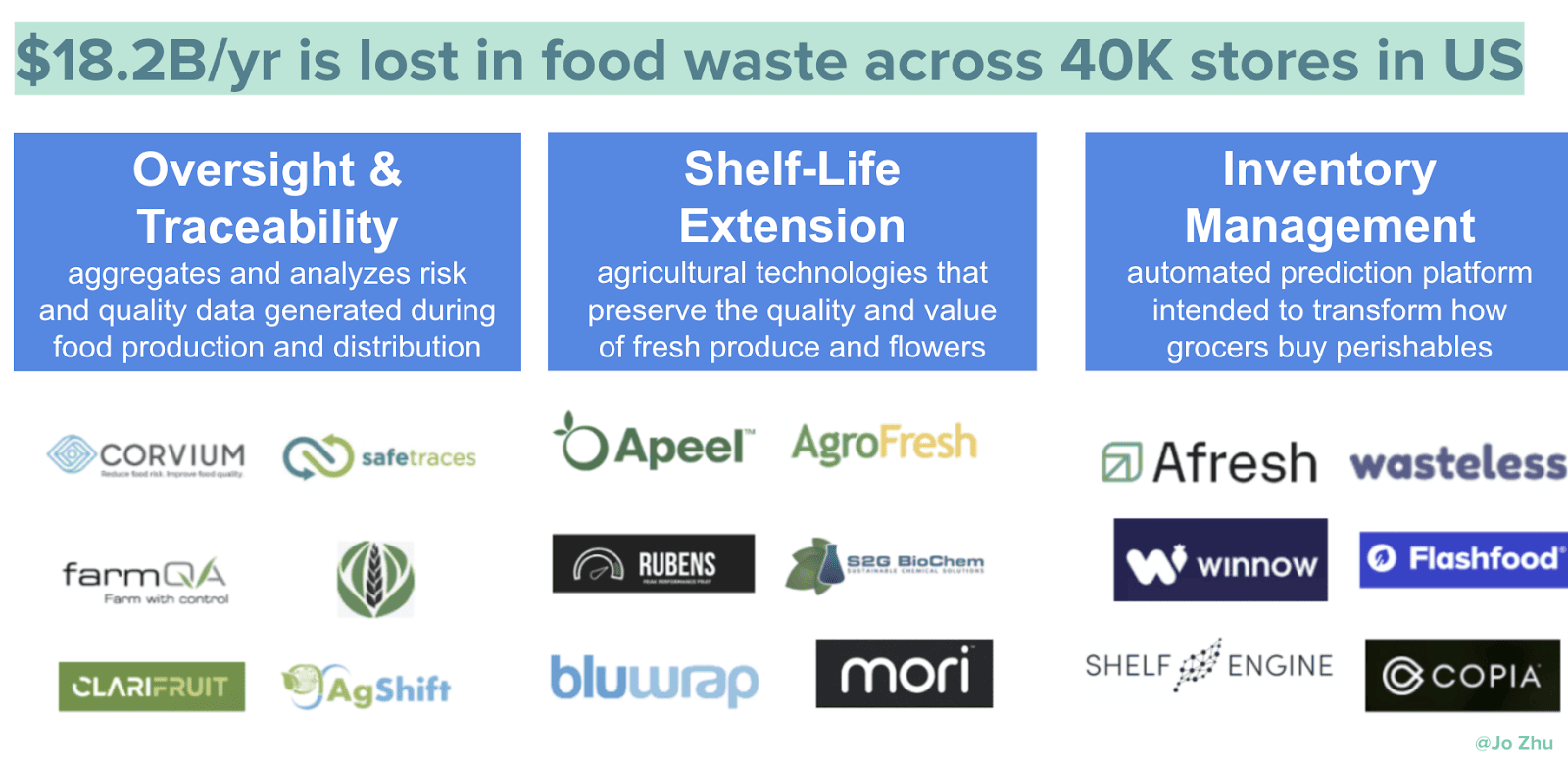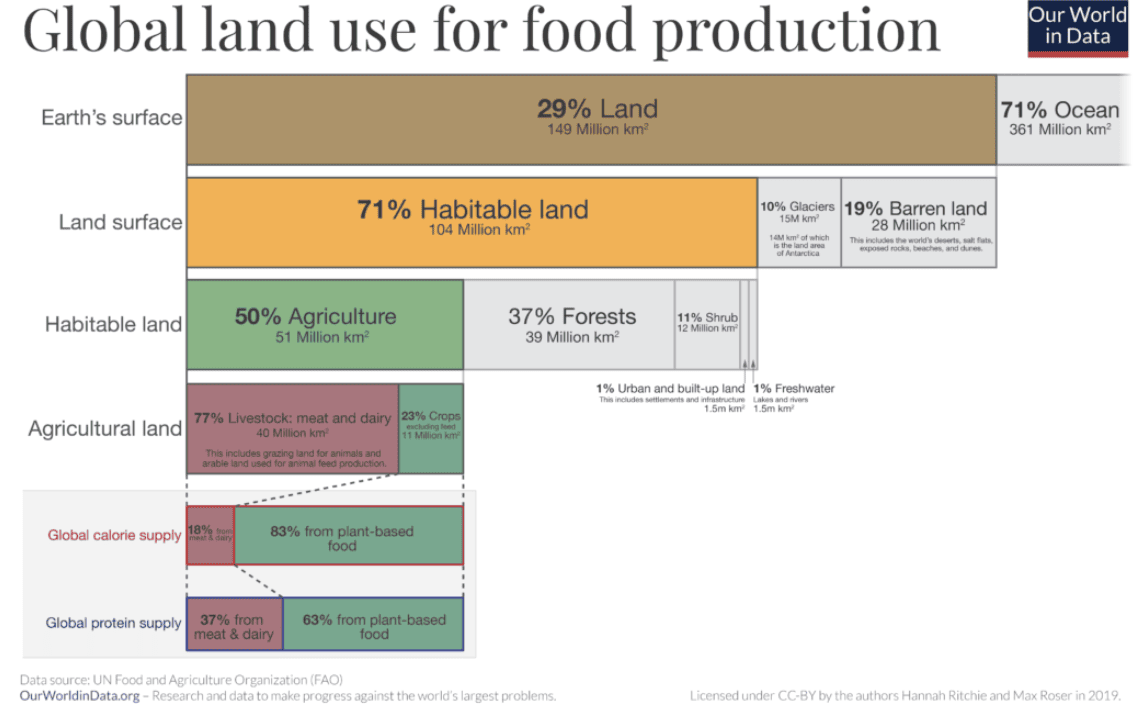At Norwest, we believe that some of the biggest disruptions of the next generation will occur within our food systems – both in terms of what we eat and how it gets to the plate. Many of these changes have massive potential to expand food access and drive sustainability within this massive industry. Our teams have been actively investing in this space for a while now, across alt-protein (Upside Foods, formerly Memphis Meats), consumer packaged goods (Kishlay Foods, MTN OPS), and food-focused marketplaces (Imperfect Foods, Swiggy).
Our guest, Jo Zhu, a student at Stanford’s Graduate School of Business, shares our passion for this future. Jo spent 10 weeks with us focused on the many changes occurring in the space. In this three-part series, she shares how COVID has accelerated a number of key trends, insights on emerging business models, and a breakdown of the core technologies unlocking sustainability levers for the next generation.
This is part 3 of our Future of Food Blog series. You can also explore part 1 and part 2 for additional background. Part 3 focuses on the adoption of AI within the food ecosystem.
Introduction
Grocery stores that have traditionally lacked e-commerce capabilities are now finding it necessary to invest in digital distribution channels. Consumers that are shopping for groceries online are driving investment into new technologies and distribution models, such as dark grocery stores, ghost kitchens, warehouse and inventory technology, digital checkout, and curbside pickup.
For grocers who are already selling online, new partnerships and enabling infrastructure are helping to increase capacity and efficiency and provide a seamless customer experience. This is creating opportunities for startups and incumbent delivery service providers focused on the evolving grocery ecosystem.

What are the drivers of AI adoption in the food industry?
As grocers and food retailers adapt to the burgeoning “convenience economy” and an omnichannel future, demand forecasting solutions are providing opportunities to reduce stockouts, optimize the flow of inventory, drive margin expansion, and minimize food waste. Below are a few of the drivers in AI adoption:
- Improved data-gathering infrastructure:
- Digital shopping surged during COVID19, which provided e-commerce players with unprecedented information on consumer shopping behaviors. YTD 2021 sales through food delivery apps grew 119% YoY, which demonstrates the ways the COVID-19 pandemic and shelter-in-place orders drove significant business online.
- Online marketplaces and other digital providers are collecting massive volumes of data on consumer spending habits, which can serve as inputs to AI tools.
- Ongoing digital transformation:
- In addition to data availability, macro trends driving AI adoption include the widespread digitization of food business practices.
- The pandemic accelerated large-scale digital transformation as operating digitally became the only option for many businesses and consumer spending shifted online. The increased focus on fully digital operations heightens the potential to find AI use cases related to analytics, automation, and customer engagement.
- Growing focus on food waste reduction:
- Awareness of the costs of food waste is a looming concern for businesses and consumers alike. Food waste represents roughly $18.2 billion annually in lost value for retailers and can total 30% of restaurant sales – a significant damper on margins.
- Food waste has become a critical consumer topic, thereby creating an opportunity for food businesses to valorize their supply chains.
- Personalization strategies:
- Food personalization has become a significant driver of innovation over the past decade.
- Driven by media and technology, consumers have gained a more nuanced understanding of food’s effects on health, well-being, and the environment, and are more food literate than ever before.
- Digital services created a demand for increased speed and convenience and a more personalized food experience.
- Large SKUs & each fresh “product” is not a carbon copy of the other:
- Unlike one pack of Oreos being the exact same as another pack, fresh foods are individually unique, each with a different ripeness, weight, and price. One of the largest challenges facing this segment of the food supply chain is the growing number of products (or SKUs) that need to be stored and distributed.
- Growing SKUs are a result of expanding consumer demand for new types of foods and flavors as well as producers’ willingness to bring new products to market. In addition to simply finding adequate storage space, the rise in SKUs also makes it harder to ensure freshness as food moves through distribution hubs.
- Distribution and storage providers focus on these essential tasks: storage, transport, and handling. Maintaining the integrity of the food involves temperature monitoring and maintenance, reducing unnecessary handling, and optimizing the supply chain to reduce spoilage.

- Venture capital fueling AI innovation:
- YTD, investors poured a record $52.1 billion of venture funding into AI & ML companies across all sectors—up 31.5% YoY and indicative of growing AI spending that extends to the food industry.
How can AI be applied to grocery stores?
As grocery delivery and pickup become increasingly mainstream, digital distribution channels are likely to become more strategically important to grocery stores, especially those that currently lack e-commerce capabilities. New business models, such as “dark stores,” could become more critical.
- Grocery store efficiency:
- Grocers often struggle to choose the optimal product mix, determine the right inventory level, and set the best prices for the approximately 28,000 items on their shelves.
- Grocers often still use paper sheets, notes, and other non-digital forecasting methods to manage perishable inventory, or they may use tools designed primarily for nonperishable goods.

- Reducing food waste:
- In the US, food waste is estimated to amount to $285 billion annually. A substantial portion of global food waste, which amounts to 1.4B tons every year, is the result of supply chain inefficiencies. Demand forecasting and inventory optimization solutions can help grocers more effectively manage fresh food departments and, ultimately, reduce food waste.

Source: Our world in data
- Especially for fresh foods (such as produce, meat, baked goods, and prepared foods), grocers must also factor in other variables such as seasonality, price, promotions, competitor behavior, and perishability challenges. Incorrect decisions can lead to stockouts, food waste, and missed profits.
- While most food waste derives from unused food, recalls due to foodborne illnesses and contamination also contribute to the problem. Food waste also contributes to climate change. Rotting food in landfills and farms is a significant source of greenhouse gas emissions.

Source: Our world in data
- Grocers need AI predictive models to help them make better decisions
- Food manufacturer and distributor facilities are often described as DRIP—data-rich and information-poor—meaning that while their equipment is often equipped with sensors to be able to collect massive quantities of data, it often goes underutilized.
- Many startups in this space are looking to help grocers in the synthesis of data while providing actionable recommendations. Emerging tools address several of the operational pain points of managing a commercial facility, including licensing, manual processes, food waste, point-of-sale (POS) systems, and customer service tools such as chatbots and recommendation engines.

- Grocery operations & streamlining day-to-day
- Grocery operators must create and manage inventory safety documentation and obtain licensing.
- These complex processes involve conducting risk assessments on food storage, providing hazard analysis, identifying critical control points and limits, establishing monitoring procedures, and maintaining accurate records.
- AI reviews operations and then automates the process of creating compliance documentation. Subsequent menu or process changes can be automatically tracked and updated for compliance.

- Automated Check-Out
- Aside from ramping up fulfillment capabilities, grocery stores are implementing technologies that enable contactless interactions that are faster than traditional methods while helping ensure social distancing.
- Amazon pioneered cashier-less technologies and automated checkout processes in the grocery space with its Go stores, launched in 2018. Amazon relies on a combination of near field communication (NFC) sensors, AI, and computer vision technologies to track items as customers pick them up and then charge the payment automatically when they leave the store.
- Dark Stores & Ultrafast Delivery
- One way incumbent grocers are responding to increased delivery demand is by creating local distribution centers, or “dark stores,” to fulfill online orders. Dark stores offer several operational benefits that can help optimize and streamline grocery store management:
- Shelf placement issues disappear as grocers stock items to maximize barcode scanning and order fulfillment
- Dark store grocers can also implement warehouse robotics and automation
- And do not need checkout or other customer service staff
- Ultrafast delivery services operate out of 3,000 square foot dark stores in urban core areas. That enables 10-15 minute delivery within their 1-mile service radius, as well as reducing supply chain costs and minimizing spoilage.
- Dark store profitability is measured with contribution margin, which excludes fixed costs. With a $25 average order value in a mature ultrafast dark store with 500 orders per day, usually there is a 13% contribution margin on orders.
- One way incumbent grocers are responding to increased delivery demand is by creating local distribution centers, or “dark stores,” to fulfill online orders. Dark stores offer several operational benefits that can help optimize and streamline grocery store management:

Source: Emergence Research
In the near term, AI will have an incrementally transformative impact on the food industry as adoption among incumbents continues. While the technology will unlikely prove disruptive in the near term, the competitive advantages arising from quicker production times, reduced costs and waste, and improved customer experience will likely lead to continued strategic and financial investment opportunities.
For founders creating companies in the food tech space, we would love to chat! Feel free to drop us an email at jozhu@stanford.edu or at (kfw@nvp.com).

